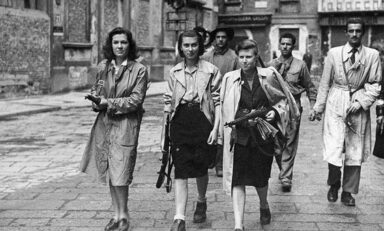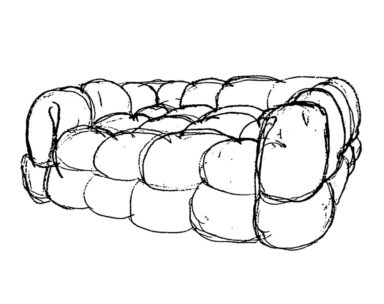According to a statement released by the organisation on Monday, “clear and convincing” evidence was collected to claim that the Islamic State of Iraq and the Levant (ISIL) was responsible for the massacre of the Yazidi community in 2014
Text by: Gilda Bruno
On May 10, 2021, a team of the United Nations said that the Islamic State, the unrecognised proto-state founded on a Salafi jihadist doctrine, committed genocide against the Yazidi people living in Iraq. Based on the data provided by the UN, about 5,000 Yazidis were killed while an estimate of 4,200–10,800 was kidnapped or held captive during the attack at the hands of the ISIL started on August 3, 2014.
During the capture of the Sinjar area, located in Upper Mesopotamia and with a predominant Yazidi population, thousands of Yazidi women and girls were forced into sexual slavery by the Islamic State. Described as a “forced conversion campaign,” the siege, which resulted in genocide, followed the withdrawal of the Kurdistan Regional Government’s Peshmerga — the military forces in charge of ensuring the security of the Kurdistan region — which deprived the Yazidis of any sort of protection leaving them defenseless against ISIS fighters.
Violence continuously escalated throughout the month of August 2014, leading to 200,000 civilians fleeing Sinjar. About 50,000 Yazidis escaped to the nearby Sinjar Mountains, where they faced starvation and dehydration after being surrounded by ISIL militants. Almost seven years after the massacre, justice still has to be served; yet, the new statements shared by the UN last Monday give us some hope to believe that perpetrators will actually be held accountable.
According to Karim Khan, the leader of the UN team investigating the genocide, “clear and convincing” evidence was gathered to prove that the Islamic State of Iraq and the Levant (ISIL) was responsible for the massacre of the Yazidi community. A total of 1,444 potential perpetrators has so far been identified by the United Nations.
After sharing her personal testimony, @NadiaMuradBasee describes that evidence from @UNITAD_Iraq not only paints a picture of what happened to Yazidis, it forecasts "what could happen in the future if there is no action."
— UK at the UN 🇬🇧 (@UKUN_NewYork) May 12, 2021
"Justice can no longer be delayed." pic.twitter.com/AaraRpkOnc
“Evidence collected by the team had also confirmed ISIL was responsible for acts of extermination, murder, rape, torture, enslavement, persecution, and other war crimes and crimes against humanity perpetrated against the Yazidis,” Khan, who’s set to become the International Criminal Court prosecutor for the case in June, explained. The Islamic State militants consider the Yazidis to be devil-worshippers because of their religious beliefs, which combine elements of numerous ancient Middle Eastern religions.
The investigation on the Yazidis genocide would have not been possible without the contributions of Nadia Murad, an Iraqi Yazidi woman who was enslaved and raped by ISIL, and human rights lawyer Amal Clooney. Together, the duo strived for the creation of a dedicated UN investigative team in 2017 and pushed for the Security Council to refer the situation to the International Criminal Court or establish a special court.
“Evidence has been found, but we are still searching for the political will to prosecute,” Murad, whose fight to end the use of sexual violence as a weapon of war won her the 2018 Nobel Peace Prize, shared with the Security Council on Monday.
Although there is still a long way to go, we want to celebrate this small step towards justice by sharing an extract of an interview Collectible DRY made with painter, sculptor, multimedia artist, and cultural activist Moataz Nasr and writer, curator, art critic, lecturer, and essayist Simon Njami in the 16th volume of the print issue, NATURALIA. Read more below.

CollectibleDRY Vol. 16 NATURALIA. Moataz Nasr ^ Om El Saad The Slave Market, 2019. Cotton paper C-print on Dibond, 150 x 210 cm. Courtesy of the artist and Galleria Continua. Photo Ela Bialkowska, Okno Studio. Courtesy of Moataz Nasr
ART IS A LANGUAGE
Moataz Nasr and Simon Nijami meet Silvia Motta
Taken from CollectibleDRY Vol. 16 NATURALIA
Collectible DRY: WHEN I HEAR THAT TODAY IN MANY COUNTRIES PEOPLE CAN’T RESOLVE CONFLICTS YET, I ASK MYSELF WHAT CAN ART DO FOR THAT? WHEN ARTISTS ARE WITNESSES TO THESE WOUNDS, HOW CAN THEY FIGHT USING ART? WHY CAN’T ARTISTS SPEAK OUT CLEARLY, AS CHILDREN DO?
Simon Nijami: I think that art is a metaphor, not a slogan, and it takes a bit of time to understand this metaphor. If you look at history in general, there is always a moment when society understands what the artist was saying, and this moment occurs always after the artist is dead. People understand Greta because she is using slogans, so something that is easy to get, but art is another language. If we have artists in the world it is because words can’t always translate what we feel, the chaos we all have inside. Now, when somebody is telling you: this is war and draws a flower… And he draws a red flower, makes the people understand that red is blood, the flower is a base. And the whole thing is basic. You have to make people feel the pain… Art is a language that does not use words nor easy metaphors.
CD: IN “PARADISE LOST,” YOUR EXHIBITION IN GALLERIA CONTINUA IN SAN GIMIGNANO, I REALLY LIKED THE WAY YOU EMBRACE SUCH DIFFERENT MEDIA, WHILE ALWAYS KEEPING A UNIFYING THREAD. FOR EXAMPLE, HOW DID YOU COME UP WITH THE IDEA OF USING THOSE LANTERNS TO REPRESENT PRAYER?
Moataz Nasr: The work is called “Petro Beads.” They’re beads made of gas canisters, the ones that you use when you go camping, inside they have lights, that we can see through the little holes that were drilled following a traditional decorative pattern… This work expresses how greatly gas and petrol are involved in religion today. I also use the orange colour to allude to the suits of Guantanamo prisoners and ISIS victims to say where the money coming from gas ends up. This piece embodies the beauty and the spirituality of religion as well as the brutality of those who’ve taken control over it.
CD: WE’RE TALKING ABOUT HOW THE SUBLIME IN HORRIFIC AND CONFLICTING IMAGES CAN BE CONTROVERSIAL… HOW SINCERITY IN POLITICAL ART IS INTENDED TO DISMANTLE MANY OF THE PRECONCEIVED NOTIONS OF THE VIEWERS. SO, WHAT ABOUT THE “SLAVE MARKET” PHOTOGRAPHIC SERIES?
MN: These works draw inspiration from old paintings from the 17th to the 19th century depicting the slave market. I was captivated by the way Western artists at that time were so fascinated by the act of buying and selling women. And actually today it is still happening in different forms, especially within my region. When they took over Syria and Iraq, ISIS established the Friday market as a slave market, where, after prayer, you could buy and sell Yazidi girls and sell them again. That’s gruesome. Nobody talks about that. The photos look beautiful and very violent indeed, attempting to express the shame felt by the woman who tries to cover her body from the gaze of those military guys.
CD: DO YOU HAVE A MISSION AS AN ARTIST?
MN: I think that every artist has his own mission. The artist is like a gadfly that keeps bothering the horse, basically a pain in the ass of society. He aims a huge spotlight at the things people pass by without stopping to ask questions.


